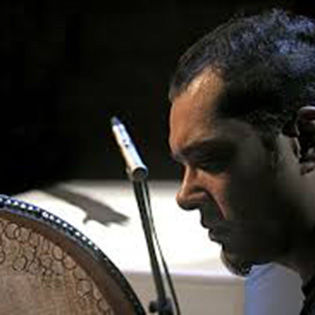Listening Through a Beam of Intense Darkness: a biopsychosocial approach to post-acousmatic composition
- Location
- The Dome, Bramall Music Building
- Dates
- Wednesday 14 February 2018 (13:00-14:00)

- Music Colloquium series 2017-2018
Speaker: Seth Ayyaz (Independent)
Venue: The Dome, Bramall Music Building (3rd Floor)
All Students and Staff are welcome to attend. Attendance is required for all MA Music Students.
Abstract
We find ourselves always in the midst of things, in a sounding and eventful world. A place were something is stirring, where tooled-sound vibrates as “an artefact of the messy and political human sphere”(Sterne 2003: 13). To articulate what this sounding-thinking might entail, I believe that we are at juncture. Not only is a great deal stirring geopolitically, but also conceptually and pragmatically. I believe that this amounts to a pressing need to exit the acousmatic in sound studies and compositional practices. The procedures by which listening can be organised (composition in all its various guises) requires a regrounding which unshackles sounding and thinking.
In this colloquium, I present an overview of my doctoral research, recently completed at City University. Thinking and sounding are two terms that sit in uneasy relation, each complicating the other. For that reason, the colloquium and concert will operate in tension with one another, the first positing a critical inversion of theory, the second proposing sonic thinking.
Sound has become highly ventriloquized, colonised and territorialized by the Sunna and hadith of historically authoritative discourses. I have in mind the transcendental idealisms of the acousmatic (Pierre Schaeffer) and acoustic ecology (Murray Schaffer) as vying sonic Sharia that overtly or clandestinely discipline compositional practices.
While we can write about music or sound, we cannot adequately emulate the experience of the sound as we have it. Sound, as a materiality, passes transparently through us, capturing a topology for which we have only partial representational access. And yet, when we speak about sound we usually insist on forcing it into signification. We cannot make sound-in-itself actually speak, or rather if we say we do, we no longer have the sound, but its representation. All we have of sound is its trace. While there is a certain geometry between sound and its trace in listening, this relation is ultimately irreversible; we can only speak about how it appears to us, because it cannot be reduced to its own identity.
To reground composition away from the established humanist models, instead propose a biopsychosocial framework for exiting the acousmatic through a bifurcated trajectory of theory and practice (Borrell-Carrió, et al. 2004).
I approach listening, independent of any subject – relative givenness, chiefly by harnessing materialist insights into the conditions of listening through the cognitive sciences (broadly conceived). This offers a pragmatic remodelling and relativising of the listening mind as practical, rather than ideal object. It becomes one of many cognitive nodes/objects; a fractionable mind-brain embedded in and emergent from the material conditions of biological, psychological and social systems.
I shall outline a set of key models and concepts, chiefly, introspective access to sound only through the mnemonic traces that it leaves, the post-acousmatic as a ‘not-knowing’ exploratory stance, an eliminativist account of the listener-sound relation; neurocognitively discrete musical domains and dimensions of the K-matrix; model-based reasoning through a Reception-Interpretation-Action helix; and, mentalizing listening stances based upon dual-process cognition models.